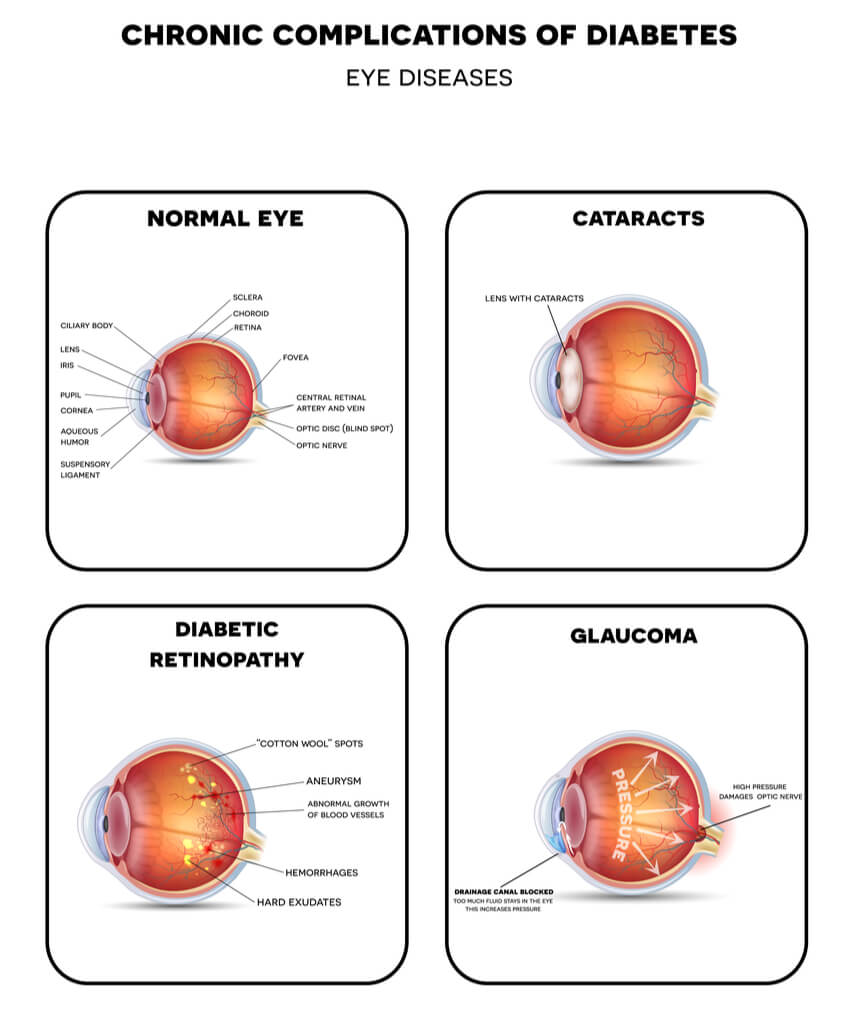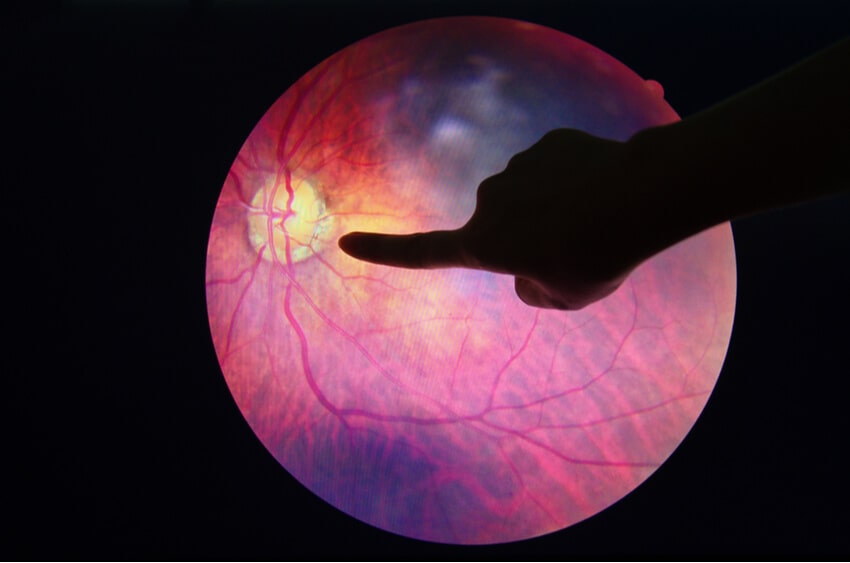The Ins And Outs of Diabetic Eye Disease
It was recently World Diabetes Day, which helped to raise awareness about the silent threat that diabetes poses to your health, including your eyes. Diabetic eye disease isn’t a single disease, it’s a group of them and if you have diabetes you are at greater risk of developing one or more.
How Does Diabetes Affect The Eyes?

Diabetes causes your blood sugar levels to rise and this damages tissues throughout your body. In your eyes, it damages the blood vessels that supply the back of your eyes, the retina – this is where visual information is detected and then sent onto your brain. This can result in several different eye diseases, including:
- Diabetic Retinopathy – blood vessels supplying your retina become leaky causing swelling and scarring of your retina, and eventually new blood vessels mistakenly grow into and damage your retina
- Diabetic Macular Oedema – swelling of the central part of your retina (the macula), which is responsible for straight-ahead, sharp vision e.g. when reading, driving or identifying faces
- Glaucoma – high pressure in your eyes that damages your optic nerve, which carries visual information from your eyes to your brain; diabetes doubles your risk of developing glaucoma
- Cataracts – clouding of the clear lenses within your eyes, which normally happens with age but can occur earlier due to diabetes
Who Is At Risk Of Diabetes-Associated Eye Disease?

Anyone with diabetes can get diabetic eye disease, however your risk is significantly higher if you don’t get treatment for your diabetes or you have untreated high blood pressure. Smoking also increases your risk.
Diabetic Eye Disease Symptoms
In the initial stages, you may not notice any symptoms despite diabetes silently damaging your eyes. However, as the disease progresses, you may experience:
- blurry vision
- your vision changing often e.g. from one day to the next
- dark areas in your vision
- difficulty seeing colours
- an increase in floaters in your vision – these look like spots, strings or cobwebs
- flashes of light
Detecting Disease Early

Diabetes can cause permanent vision loss, which makes early detection important. The best way to detect eye disease is by keeping up with your regular eye tests. Although you may not notice any changes in your vision, your optometrist is more likely to pick up on subtle changes while examining your vision and your eyes.
At Optikal Opticians, we also offer advanced eye scans, which help with early detection. These include:
- Optomap Ultra-Widefield Scans – this technology captures up to 80% of your retina in a single image, compared to just 15% captured with traditional methods
- OCT Scans – these scans show the different layers of your retina to create a 3D image that allows us to see beneath the surface of your retina.
Together these scans allow us to examine more of your retina in greater detail, so the earliest signs of disease are caught and further damage prevented.
If you’re concerned that you may be at risk of eye disease due to diabetes, get in touch with Optikal Opticians to book an eye exam.
